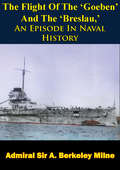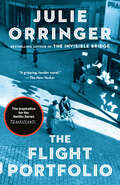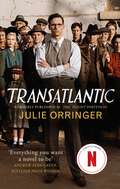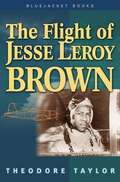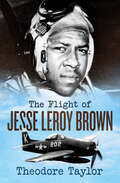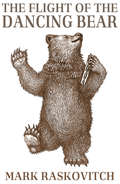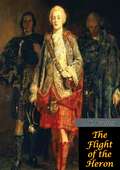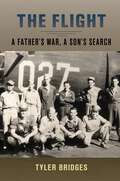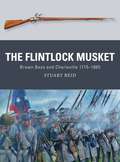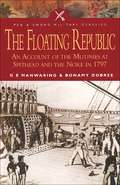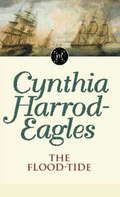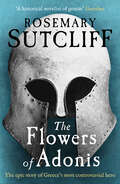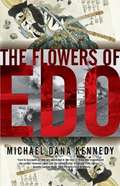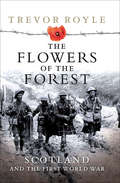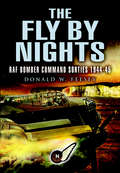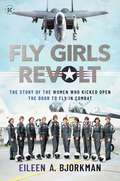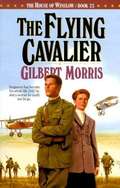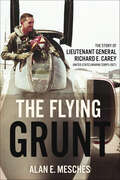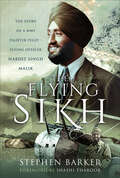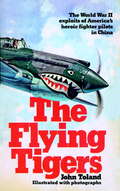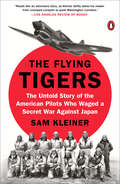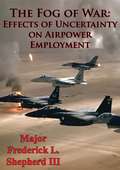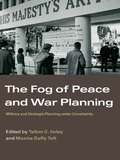- Table View
- List View
The Flight Of The ‘Goeben’ And The ‘Breslau,’ An Episode In Naval History
by Admiral Sir A. Berkeley MilneThe pursuit of Goeben and Breslau was a naval action that occurred in the Mediterranean Sea at the outbreak of the First World War when elements of the British Mediterranean Fleet attempted to intercept the German Mittelmeerdivision consisting of the battlecruiser SMS Goeben and the light cruiser SMS Breslau. The German ships evaded the British fleet and passed through the Dardanelles to reach Constantinople, where they were eventually handed over to the Ottoman Empire. Renamed Yavuz Sultan Selim, the former Goeben was ordered by its German captain to attack Russian positions, in doing so bringing the Ottoman Empire into the war on the side of the Central Powers.Though a bloodless "battle", the failure of the British pursuit had enormous political and military ramifications. In the short term it effectively ended the careers of the two British Admirals [one of whom is the author of this book] who had been in charge of the pursuit. Writing several years later, Winston Churchill - who had been First Lord of the Admiralty - expressed the opinion that by forcing Turkey into the war the Goeben had brought "more slaughter, more misery, and more ruin than has ever before been borne within the compass of a ship."
The Flight Portfolio: A novel (Vintage Contemporaries Ser.)
by Julie OrringerFrom the bestselling, award-winning author of The Invisible Bridge comes a gripping tale of forbidden love, high-stakes adventure, and unimaginable courage filled with "suspense and tragedy, unexpected twists and deliverance&” (The Seattle Times). • THE INSPIRATION FOR THE NETFLIX SERIES TRANSATLANTIC MARSEILLE, 1940. Varian Fry, a Harvard-educated journalist and editor, arrives in France. Recognizing the darkness descending over Europe, he and a group of like-minded New Yorkers formed the Emergency Rescue Committee, helping artists and writers escape from the Nazis and immigrate to the United States. Amid the chaos of World War II, and in defiance of restrictive U.S. immigration policies, Fry must procure false passports, secure visas, seek out escape routes through the Pyrenees and by sea, and make impossible decisions about who should be saved, all while under profound pressure—and in a state of irrevocable personal change. In this dazzling work of historical fiction—one that illuminates previously unexplored elements of Fry&’s story, and has, since its publication, brought us new insight into his life.
The Flight Portfolio: Based on a true story, utterly gripping and heartbreaking World War 2 historical fiction
by Julie Orringer1940, Nazi occupied France. In the middle of a devastating war, how many lives can you save?Varian Fry, a young American journalist, arrives in Marseille, shortly after the Germans have occupied the country. He is armed only with three thousand dollars and a list of writers, thinkers and artists he hopes to rescue - so long as the Nazis don't get to them first.With borders closing around him, Varian tries to track down those on his list - renowned artists like Marc Chagall, who cannot believe that he will ever be unsafe in the country he loves. He smuggles them over the Pyrenees mountains and across the sea hidden in boats, but everyday hundreds of ordinary Jewish refugees beg him for help. Does Varian have the right to choose who to save?At home in New York, making a list seemed simple, but in the middle of the worst war imaginable, he must do all he can to help. And as the Nazis begin to get word of Varian's secret operation, he must find dig deep and find the courage to rescue as many innocents as he can.Even though his own life may be in terrible danger. An incredibly compelling and heart-wrenching historical novel, inspired by true events, about the extraordinary courage and friendships forged during humanity's darkest hour. If you loved Schindler's List, All The Light We Cannot See or The Tattooist of Auschwitz, you'll adore The Flight Portfolio.What readers are saying about The Flight Portfolio:⭐⭐⭐⭐⭐ 'Oh - it's FABULOUS!... The best historical novel I've read in a long time.' Goodreads Reviewer⭐⭐⭐⭐⭐ 'I love this book so much I can barely breathe.' Goodreads Reviewer⭐⭐⭐⭐⭐ 'Such a wonderful novel!!... Please do yourself a favour and read it!!' Goodreads Reviewer⭐⭐⭐⭐⭐ 'Couldn't put this down. Beautiful writing and a riveting plot make this book an absolute page-turner!' Goodreads Reviewer⭐⭐⭐⭐⭐ 'I did not want this book to end... Riveting. I loved it.' Goodreads Reviewer⭐⭐⭐⭐⭐ 'An outstanding book for anyone who likes historical fiction, a gripping story, lyrical writing, or all three. It is one of those books that you never want to end.' Goodreads Reviewer⭐⭐⭐⭐⭐ 'I can't begin to believe that I will read another book this year that will even come close to reaching the heights of The Flight Portfolio.' Goodreads Reviewer
The Flight of Jesse Leroy Brown
by Theodore TaylorThis volume tells the story of Jesse Leroy Brown, who became the Navy's first black pilot. Taylor consulted Brown's training and flight records and logs and includes quotes from them, in addition to letters. He describes Brown's training, experiences in combat, personal life, and other details. Annotation ©2007 Book News, Inc., Portland, OR (booknews.com)
The Flight of Jesse Leroy Brown
by Theodore TaylorThis biography of America&’s first African American naval aviator is a &“compelling portrait of a quiet hero [and] the racial climate between 1926 and 1959&” (Booklist). &“In the late 1940s, when every aspiring black pilot had heard of the army&’s Tuskegee program, Jesse Leroy Brown set his sights on becoming a navy aviator. An outstanding student and top athlete, the 17-year-old&’s ambition was met with a combination of incredulity and resistance. Yet, at a time when Jim Crow laws were rampant, Brown managed to break the color barrier to become the first black U.S. Navy pilot. Taylor puts his considerable narrative skills to good use in tracing Brown&’s path from his youth in poverty-stricken Palmer&’s Crossing, Miss., to his eventual induction into the heady and dangerous world of carrier aviation. Taylor based much of his research on interviews with those who knew Brown and on personal letters from more than a half-century ago [and] doesn't skimp on the indignities Brown suffered. . . . An engaging and intimate glimpse of a young pioneer who desperately wanted to earn his aviator&’s wings.&” —Publishers Weekly &“More than a biography, this is a thrilling story of naval aviation and combat.&” —School Library Journal
The Flight of the Dancing Bear
by Mark RascovichThe Flight of the Dancing Bear, first published in 1959, is an exciting novel set in Soviet Russia. The story centers on Ur Kamak and Natacha, his performing bear, beloved by the Russian people, but who get into trouble when the aging bear bites a Red Army general. Rather than obey orders to kill the animal, Ur and the bear decide to flee to the safety of neighboring Finland. Also involved are a host of others including Kamak’s niece and the young British diplomat who loves her, the members of a collective that produces illegal vodka, a Russian sharpshooter who hates the present regime, the inmates of a pioneer colony, a lady engineer and her train, and two foreign correspondents. Before Kamak, his niece, Natacha and their odd entourage Finland, they are beset with adventures ranging from the tragic to the hilarious. Combining laughter with tears, The Flight of the Dancing Bear is a fascinating look at life in the former Soviet Union.
The Flight of the Heron (The Jacobite Trilogy #1)
by D. K. BrosterSet during the 1745 Jacobite uprising under Bonnie Prince Charlie, D. K. Broster's The Flight of the Heron is the first of the Jacobite Trilogy.At the centre of the story are the intersecting fortunes of two men, who at first glance seem almost complete opposites: Ewen Cameron, a young Highland laird in the service of the Prince, is dashing, sincere, and idealistic, while Major Keith Windham, a professional soldier in the opposing English army, is cynical, world-weary, and profoundly lonely. When a second-sighted Highlander tells Ewen that the flight of a heron will lead to five meetings with an Englishman who is fated both to do him a great service and to cause him great grief, Ewen refuses to believe it.But as Bonnie Prince Charlie's ill-fated campaign winds to its bitter end, the prophecy is proven true--and through many dangers and trials, Ewen and Keith find that they have one thing indisputably in common: both of them are willing to sacrifice everything for honour's sake...Twice adapted for BBC Radio (1944 and 1959) and made into a TV serial by Scottish Television (1968) and the BBC (1976), this is the unmissable best-seller that first catapulted author D. K. Broster to fame!
The Flight: A Father’s War, a Son’s Search
by Tyler BridgesBoth history and memoir, The Flight tells the story of Richard W. “Dick” Bridges’s heroic service in World War II. Bridges survived a German attack on his plane, the Fascinatin’ Witch, by parachuting out of the exploding B-24. He escaped detection in Austria, became the first American prisoner of war in Hungary, was sent to Yugoslavia, escaped from his POW camp there, was sheltered by the Partisans one step ahead of the Germans, and was finally airlifted to safety in Italy by the British.Bridges’s story, which seems almost too astonishing to be true, went untold until after his death in 2003, when his son, Tyler Bridges, pieced it together. The younger Bridges’s odyssey in search of his father’s wartime experiences connected him with the families of other crew members aboard the Fascinatin’ Witch and led him to retrace his father’s footsteps through Austria, Hungary, and the former Yugoslavia.With his findings, Bridges has woven a story not only about World War II and the bravery of this unique group of soldiers, but also about fathers and sons, what can get lost in the gulf between generations, and how patience and understanding can bridge that gap.
The Flintlock Musket
by Steve Noon Stuart ReidThe flintlock or firelock musket is one of the truly iconic weapons in history: first used on the battlefields of the Thirty Years' War and the English Civil War, it was carried by both sides at Bunker Hill, Waterloo and the Alamo, and can truly be said to have dominated warfare for more than 150 years, until the advent of cartridge ammunition and breechloading weapons in the 1840s and 1850s and were still being widely used as late as the American Civil War in the 1860s.During the 18th century flintlocks tended to follow one of two basic patterns: from 1722 the British .75-calibre model, the 'Brown Bess', offered better man-stopping qualities and influenced the Prussians and others, while from 1717 the lighter, handier but more sturdy French .69-calibre Charleville served as a pattern first for the other Bourbon kingdoms such as Spain, then the American Springfield family of weapons, and finally for just about everybody else in Europe during the Napoleonic era.Featuring specially commissioned full-colour artwork, this engaging study examines the role played by the flintlock in close-order combat on European and other battlefields, employing first-hand accounts to show how tactical doctrines were successfully developed to overcome the weapon's inherent limitations; it also explores the use of the flintlock musket by individuals in irregular warfare, chiefly in North America. These two threads are combined in an analysis of the weapon's lasting impact; notwithstanding its frequently negative portrayal in popular films and otherwise respectable histories, it was extremely effective and the first truly universal soldier's weapon.
The Floating Republic: An Account of the Mutinies at Spithead and the Nore in 1797 (Pen & Sword Military Classics)
by Bonamy Dobree G.E. ManwaringThe naval mutiny of 1797 is the most astonishing recorded in British history; by its management rather than by its results. Though it shook the country, it was largely ordered with rigid discipline, a respect for officers and an unswerving loyalty to the King. Moreover, it was so rationally grounded that it not only achieved its immediate end, the betterment of the sailor's lot, but also began a new and lasting epoch in naval administration.
The Flood-Tide: The Morland Dynasty, Book 9 (Morland Dynasty #9)
by Cynthia Harrod-Eagles1772: Althought George III reigns over a peaceful England, his colonies in the Americas are claiming independence and a tide of revolutionary fervour is gripping France.Allen Morland and his beloved wife Jemimas work unstintingly to bring Morland Palace back to its former glory. Their seven children often bring them heartache, but they are sustained by their love of each other.The Mordland adventurer, Charles, emingrates to Maryland in persuit of the heiress Eugenie, but finds himself in the midst of the American claim for indepdence. Meanwhile, Henry, the family's bastard offshoot, pursues pleasure relentlessly but pennilessly until he finds a niche for himself in the fashionable Parisian salons, whilst outside revolution creeps closer...
The Flood-Tide: The Morland Dynasty, Book 9 (Morland Dynasty #9)
by Cynthia Harrod-Eagles1772: Although George III reigns over a peaceful England, his colonies in the Americas are claiming independence and a tide of revolutionary fervour is gripping France. Allen Morland and his beloved wife Jemimas work unstintingly to bring Morland Palce back to its former glory. Their seven children often bring them heartache, but they are sustained by their love of each other.The Mordland adventurer, Charles, emingrates to Maryland in persuit of the heiress Eugenie, but finds himself in the midst of the American claim for indepdence. Meanwhile, Henry, the family's bastard offshoot, pursues pleasure relentlessly but pennilessly until he finds a niche for himself in the fashionable Parisian salons, whilst outside revolution creeps closer.
The Flowers of Adonis
by Rosemary SutcliffA &“highly satisfactory&” historical novel portrays Alcibiades as &“magnetic, brilliant, often ruthless, restless, unable to accept a simple destiny&” (Kirkus Reviews). From the internationally acclaimed author of The Eagle of the Ninth . . . The epic story of Greece&’s most controversial hero. In the fifth century BC, against the background of perpetually warring Greek city-states, one man towered above the chaos. His name was Alkibiades. Friend of Socrates, sailor, warrior and incorrigible lover, he fled persecution in his native Athens to join her enemy: Sparta. However, his brilliant naval and diplomatic victories could not save him from the consequences of impregnating the Spartan queen, and once more he was forced to flee. Alkibiades settled into life as a roving soldier of fortune, though his love for Athens proved to be the overriding influence of his later life. When that glorious city eventually fell to the Spartans, his own violent demise was shortly to follow . . . &“A fascinating character study told with skill and erudition.&” —The Daily Telegraph &“A gripping story of battle, intrigue and ruin.&” —Evening Standard
The Flowers of Edo
by Michael Dana KennedyIn the climactic closing months of World War II, Allied Intelligence officers are summoned to the Malcañan Palace in Manila to be briefed by General MacArthur's Intelligence Staff on the optimal conclusion to the conflict in the Pacific Theater. Intelligence collected at the time concluded that the Americans had only three options to effectively force the Imperial Japanese Military into surrender: encirclement, blockade, and bombardment; isolating Japan from its forces in China, Korea, and Formosa; or engaging Japan through a full-scale amphibious invasion.In the debut novel by Michael Dana Kennedy, Japanese-American Lt. Ken Kobayashi must straddle a delicate line between duty to country and honor to his family as he is assigned by General MacArthur to infiltrate the Imperial Japanese Army in the lead-up to an invasion of the Japanese archipelago. From the deck of the U.S.S. Yorktown to the halls of the Imperial Ministry of War in Ichigaya in Tokyo, The Flowers of Edo reveals the intricacies of the military machine and the human and cultural price that was paid in the bombings on Japan through a perspective never before seen in fiction. Meticulously researched and endorsed by military insiders and historians from both sides of the Pacific, Lt. Kobayashi's tale of espionage and romance will shed new light on what might have happened.
The Flowers of the Forest: Scotland and the First World War
by Trevor RoyleThe author of Culloden details the effects of World War I on Scotland. On the brink of the First World War, Scotland was regarded throughout the British Isles as &“the workshop of the Empire.&” Not only were Clyde-built ships known the world over, Scotland produced half of Britain&’s total production of railway equipment, and the cotton and jute industries flourished in Paisley and Dundee. In addition, Scots were a hugely important source of manpower for the colonies. Yet after the war, Scotland became an industrial and financial backwater. Emigration increased as morale slumped in the face of economic stagnation and decline. The country had paid a disproportionately high price in casualties, a result of huge numbers of volunteers and the use of Scottish battalions as shock troops in the fighting on the Western Front and Gallipoli—young men whom the novelist Ian Hay called &“the vanished generation.&” In this book, Trevor Royle provides the first full account of how the war changed Scotland irrevocably by exploring a wide range of themes: the overwhelming response to the call for volunteers; the performance of Scottish military formations in 1915 and 1916; the militarization of the Scottish homeland; the resistance to war in Glasgow and the west of Scotland; and the boom in the heavy industries and the strengthening of women&’s role in society following on from wartime employment. &“Royle has done First World War History a great service.&” —Gary Sheffield, military historian &“His exceptional talents at narration produce a work that is both through-provoking and engaging . . . A vivid, solidly-written book.&” —International Review of Scottish Studies
The Fly By Nights: RAF Bomber Command Sorties 1944–45
by Donald W. FeeseyAt the age of eighteen Don Feesey volunteered for pilot training with the RAF. Having almost completed his course to become a fighter pilot, an eye problem was detected and he was switched to navigational training. He completed a tour of thirty-four successful operations, the majority at night during 1944 and 1945 at the height of the bomber offensive. On one remarkable sortie his Lancaster lost all power and the order to bale out was given. As the aircraft gradually lost altitude, making a safe parachute descent more impossible by the second, Don was about to jump when the pilot, still at the controls, attracted his attention. It was a life or death situation. Should he jump or go to the assistance of his pilot, leading to an almost certain death? He elected to go to the aid of what he thought was his trapped pilot but to his astonishment he found that the skipper had nursed one engine back into life, so the only two remaining crew managed to struggle back across the Channel, only to find that at 700feet they could not climb over the usually welcome white cliffs of Dover. They turned for Manston, the nearest airfield and flew along the coastline to make an eventual safe landing.
The Fly Girls Revolt: The Story of the Women Who Kicked Open the Door to Fly in Combat
by Eileen A. BjorkmanThis is the untold story of the women military aviators of the 1970s and 1980s who kicked open the door to fly in combat in 1993—along with the story of the women who paved the way before them.In 1993, U.S. women earned the right to fly in combat, but the full story of how it happened is largely unknown. From the first women in the military in World War II to the final push in the 1990s, The Fly Girls Revolt chronicles the actions of a band of women who overcame decades of discrimination and prevailed against bureaucrats, chauvinists, anti-feminists, and even other military women. Drawing on extensive research, interviews with women who served in the 1970s and 1980s, and her personal experiences in the Air Force, Eileen Bjorkman weaves together a riveting tale of the women who fought for the right to enter combat and be treated as equal partners in the U.S. military. Although the military had begun training women as aviators in 1973, by a law of Congress they could not fly in harm&’s way. Time and again when a woman graduated at the top of her pilot training class, a less-qualified male pilot was sent to fly a combat aircraft in her place. Most of the women who fought for change between World War II and today would never fly in combat themselves, but they earned their places in history by strengthening the U.S. military and ensuring future women would not be denied opportunities solely because of their sex. The Fly Girls Revolt is their story.
The Flyboy's Temptation
by Kimberly Van MeterRisky business... A redhead with long legs, creamy kissable skin and a big fat wad of cash? That's the kind of trouble former Air Force pilot J. T. Carmichael can't resist. With his charter flight business on the verge of bankruptcy, J.T. can't afford to say no to the money or the uniquely sexy woman who needs to get to South America immediately. Until the bullets start flying... When his plane goes down somewhere in the Mexican jungle, J.T. realizes two things: (1) he might not make it out alive, and (2) he wants Hope Larsen something fierce. Stranded and fighting for their lives, neither Hope nor J.T. can avoid the inevitable rush of pure, heated lust. Now this flyboy isn't just flying in the face of danger...he's sleeping with her.
The Flying Cavalier (House of Winslow, #23)
by Gilbert MorrisWhen his wife is killed during German bombardment, RAF pilot Lance Winslow vows revenge. Logan Winslow from America comes with his friend, Revelation Brown to fight in World War I.
The Flying Grunt: The Story of Lieutenant General Richard E. Carey, United States Marine Corps (Ret)
by Alan E. MeschesInspiring story of a young man from a humble background who received the Bronze and Silver Star for service as a Marine in Korea, including fighting at the Chosin Reservoir, and was almost selected as an astronaut.Richard Edward Carey came from a broken home. Enlisting in the Corps in 1946 he later earned a commission, fighting at Inchon and Chosin in Korea before becoming a pilot—flying every aircraft in the Marine arsenal. During his 38-year military career he witnessed and participated in major historical events, though a high school wrestling injury would eliminate him from the Mercury-7 space program. As a second lieutenant, he tackled General Douglas MacArthur on the way to Seoul in 1950. Carey would provide critical intelligence decisions enabling the successful defense of the Chinese attack on Hagaru-ri at the Chosin Reservoir. In 189 days of combat, he escaped death seven times, and was awarded the Silver Star and Bronze Star Medals. In Vietnam, he flew 204 combat sorties, earning the Distinguished Flying Cross and 16 Air Medals. In 1975, from Saigon, Carey led history’s largest helicopter evacuation of refugees. Subordinates praised his leadership and courage. Never afraid to stand up for his principles, Carey faced down an Air Force general in Vietnam, and organized air defense for supply helicopters at Khe Sahn; he countermanded a senior Naval officer’s order during the 1975 Saigon evacuation, refusing to cease air operations and forcing a reluctant ambassador onto a flight. In retirement, Carey served as a cabinet member for the governor of Ohio and ran the airport in his native home of Columbus. When the Careys moved to Texas, Carey continued supporting veterans, advocating for veterans’ health care, aiding the drive to build accommodation for families of hospitalized veterans, and was a leader in the effort to build a veterans’ cemetery in Dallas. He would lead the drive to build two Chosin Few memorials even as he cared for his ailing wife. This biography is based upon hours of interviews with the general, his papers, speeches, and Marine Corps documents that captured an exceptional and inspiring life.
The Flying Sikh: The Story of a WW1 Fighter Pilot—Flying Officer Hardit Singh Malik
by Stephen BarkerThe Flying Sikh tells the unique story of the only Sikh airman to fly with the RFC and the RAF during the First World War. It is the remarkable account of one man’s struggle to enlist, against discrimination, and then his service as a fighter pilot over the battlefields of Flanders. This book represents the only detailed study of an Indian national enlisting in Britain’s armed forces during the First World War. It is an account of India’s role in the war; the rise of Indian nationalism and the challenges of Indians to take up the status of a commissioned officer in His Majesty’s Armed Forces. Malik started his new life in Britain as a fourteen-year-old public school boy, who progressed to Balliol College, Oxford, before attempting to join the Royal Flying Corps after graduation with friends from university, but was denied a commission. Keen to participate in the war, he served with the French Red Cross in 1916 as an ambulance driver and then offered his services to the French air force. Ultimately, one of his Oxford tutors wrote on Malik’s behalf to General David Henderson, the former head of the RFC, and secured Malik a cadetship Above all though, it is the story of a man who was a county cricketer who played for Sussex and Oxford University, an outstanding golfer and fighter pilot who fought over Passchendaele in the autumn of 1917. Being a devout Sikh, he wore a specially designed flying helmet that fitted over his turban. Malik claimed two kills until he was shot down, crashing unconscious to the ground behind Allied lines. His Sopwith Camel was riddled with over 400 bullet holes. Malik was only one of a small number of Indian nationals who served with the RAF during the war. In later life, Malik became the first Indian High Commissioner to Canada, and then served as the Indian Ambassador to France.
The Flying Tigers
by John TolandDuring World War II, a group of American fighter pilots roamed the skies over China and Burma, menacing the Japanese war effort without letup. Flamboyant, daring, and courageous, they were called the Flying Tigers. The Tigers, who had been recruited from the Army, Navy, and Marines, first saw action as a volunteer group fighting on the side of the Chiang Kia-shek's China against Japan. Trained in the unconventional air-combat tactics of their maverick leader Claire Lee Chennault, they racked up some of the most impresive air victory records of World War II. This is the story of Chennault and his magnificent Tigers -- and how they performed the impossible.
The Flying Tigers: The Untold Story of the American Pilots Who Waged a Secret War Against Japan
by Sam KleinerThe thrilling story behind the American pilots who were secretly recruited to defend the nation’s desperate Chinese allies before Pearl Harbor and ended up on the front lines of the war against the Japanese in the Pacific Sam Kleiner’s The Flying Tigers uncovers the hidden story of the group of young American men and women who crossed the Pacific before Pearl Harbor to risk their lives defending China. Led by legendary army pilot Claire Chennault, these men left behind an America still at peace in the summer of 1941 using false identities to travel across the Pacific to a run-down airbase in the jungles of Burma. In the wake of the disaster at Pearl Harbor this motley crew was the first group of Americans to take on the Japanese in combat, shooting down hundreds of Japanese aircraft in the skies over Burma, Thailand, and China. At a time when the Allies were being defeated across the globe, the Flying Tigers’ exploits gave hope to Americans and Chinese alike. Kleiner takes readers into the cockpits of their iconic shark-nosed P-40 planes—one of the most familiar images of the war—as the Tigers perform nail-biting missions against the Japanese. He profiles the outsize personalities involved in the operation, including Chennault, whose aggressive tactics went against the prevailing wisdom of military strategy; Greg “Pappy” Boyington, the man who would become the nation’s most beloved pilot until he was shot down and became a POW; Emma Foster, one of the nurses in the unit who had a passionate romance with a pilot named John Petach; and Madame Chiang Kai-shek herself, who first brought Chennault to China and who would come to visit these young Americans. A dramatic story of a covert operation whose very existence would have scandalized an isolationist United States, The Flying Tigers is the unforgettable account of a group of Americans whose heroism changed the world, and who cemented an alliance between the United States and China as both nations fought against seemingly insurmountable odds.
The Fog Of War: Effects Of Uncertainty On Airpower Employment
by Major Frederick L. Shepherd IIIThis paper addresses the question: Can fog be identified from past air campaigns and applied to make future air combat more effective? The purpose is to educate the reader on fog and to offer techniques for coping with fog in future air combat. The paper is divided into three sections: Defining fog; presenting examples of fog from the air campaigns of World War II Europe and the Persian Gulf War; and recommending ways to cope with it.This paper defines fog as uncertainty about the enemy, the environment, and friendly forces. Examples will illustrate these uncertainties so the reader can learn to identify uncertainty in the air combat environment. The paper concludes with an analysis of uncertainty, along with recommendations for coping with uncertainty in the employment of airpower. These recommendations are under the five general areas of technology, leadership, training, experience, and planning.The author believes that the key to coping with uncertainty is to understand it. Thus, the airpower practitioner needs to know what uncertainty is, what it looks like, and how to avoid it, or at least minimize its adverse impacts.
The Fog of Peace and War Planning: Military and Strategic Planning under Uncertainty (Strategy and History #Vol. 12)
by Monica Duffy Toft Talbot C. ImlayHow do we plan under conditions of uncertainty? The perspective of military planners is a key organizing framework: do they see themselves as preparing to administer a peace, or preparing to fight a future war? Most interwar volumes examine only the 1920s and the 1930s. This new volume goes back, and forward in time, to draw on a greater expanse of history in order to tease out lessons for contemporary planners.These chapters are grouped into four periods: 1815-1856, 1871-1914, 1918-1938, and post-Second World War. They progress from low-tech to high-tech concerns, for example, the first period examines armies, while the second period examines navies, the third asseses navies combined with air forces, and finally for the Kaiser chapter explores nuclear issues and decision-making.
